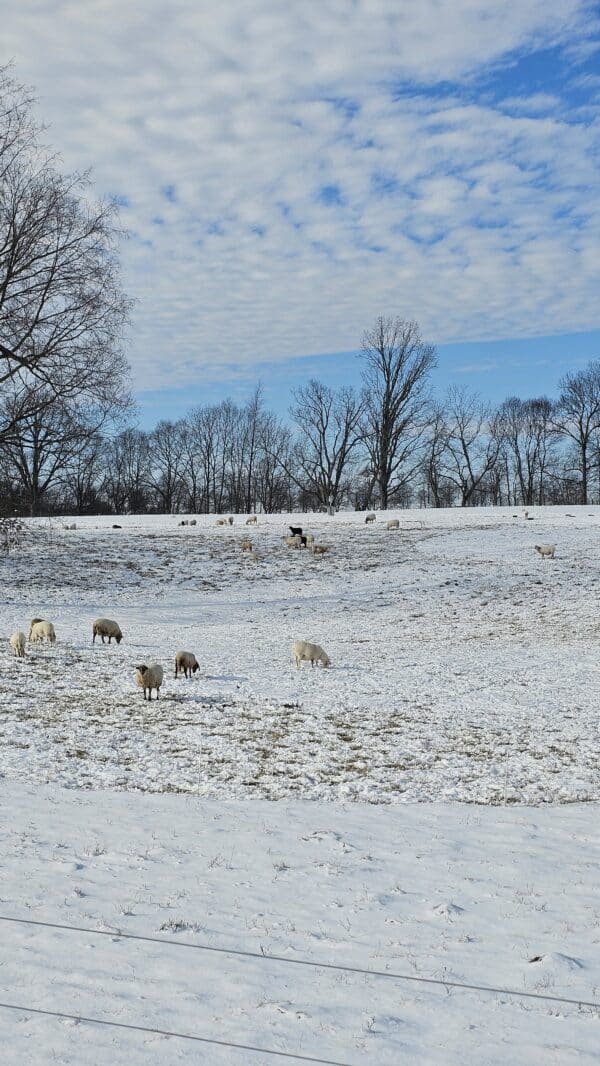
Many folks are surprised to learn that even though our livestock are 100% grass-fed, we do feed hay and wonder how that fits in with our operation.
Simply put, hay is made up of the grasses and/or legumes that are cut down from pastures, left to dry and then compacted into what are called bales. Though we do everything we can each year to extend our grazing season further and further out, the reality is that during the winter months our pastures go dormant and therefore can’t supply the necessary amount of grass for our livestock to feed. Our cattle and sheep are ruminants and need that constant supply of fibrous plant material to keep their digestive systems functioning well, even during the winter. That’s where hay comes in.
There are lots of different types of hay; common varieties include alfalfa, orchard grass, and timothy. We grow and bale our own blend here on the farm and ours is a mix of alfalfa, orchard grass, timothy, and fescue. We’ve found this mix to contain the right combination of protein and sugar to sustain our livestock throughout the winter. This year we’ve been baling earlier than usual because of the ideal weather conditions and the growth we’ve seen on the pastures, probably from the wet winter we had. Baling early doesn’t effect the quality of the hay but it does mean fitting it into our operation amongst other tasks for the season.
But like so much in farming, it all starts with a seed. Many hundreds of thousands of them to be exact, spread out in our fields using what we affectionately call the “seed driller” and an industrial broadcaster. This is typically done anywhere from February to April or May depending on the weather we’ve been having and the condition of the pastures.
Once those pastures have been seeded they’re left to regenerate until it’s time to cut. Because we are a certified organic farm we don’t use any sprays or pesticides on our pastures so we will remove any weeds by hand with a hoe.

Given the chance, our livestock love to graze on pasture – even in the snow! The cornerstone of our commitment to regenerative agriculture is rotational grazing. The overall goal is to avoid sequestering animals to one pasture to graze which leads to more exposure to parasites and a greater increase in soil disturbance. For example, our cattle are rotated across hundreds of acres of pastures for more than 850 days, as opposed to remaining in just one section. As they graze on grass they also keep the weeds in check, while the nutrients in the soil that are being depleted get replenished in the form of manure, which helps more grass to grow.
Though feeding our livestock hay is not quite the same as grazing on pasture, we aim for our hay to match the quality of pasture grass as closely as possible both for the health of our livestock as well as the quality of the meat.



Made with 
